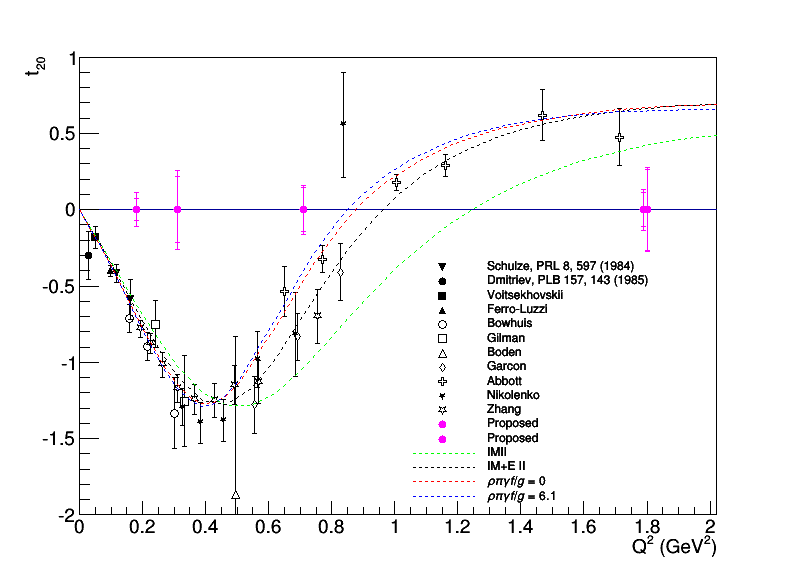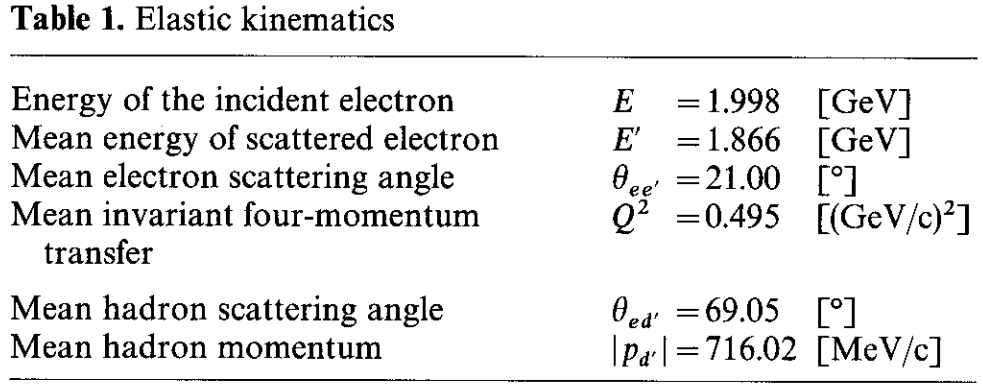Difference between revisions of "Elong-15-04-07"
(New page: =Open Question= Can we measure t20 using inclusive D(e,e')? Or does it require a second spectrometer for exclusive D(e,e'D)? I can't find a single past measurement of t20 done using inclu...) |
|||
| Line 32: | Line 32: | ||
[[Image:2015-04-07-t20-update.png]] | [[Image:2015-04-07-t20-update.png]] | ||
| + | |||
| + | An important caveat related to the first topic above: The Boden measurement tags deuterons with a hadron scattering angle of ~70 deg, which is where each t20 measurement is placed on the plot above. | ||
| + | |||
| + | [[Image:2015-04-07-boden-kine.png]] | ||
Revision as of 16:03, 7 April 2015
Open Question
Can we measure t20 using inclusive D(e,e')? Or does it require a second spectrometer for exclusive D(e,e'D)? I can't find a single past measurement of t20 done using inclusive scattering, although the formalism seems to be nearly identical to our D(e,e') Azz measurements.
Relating t20 and Azz
The Boden '91 paper, the only existing t20 measurement taken with a solid ND3 target, does a nice job of describing the relationship between the measured ratio and t20. Eq. 1 describes their ratio,
<math>R_{exp}=\frac{d\sigma_p}{d\sigma_u}=1+P_{zz} \left( \frac{d\sigma_T-d\sigma_u}{d\sigma_u} \right) = 1+P_{zz} \left( R_T-1 \right). </math>
This matches closely to our Azz,
<math>A_{zz}=\frac{2}{fP_{zz}}\left( \frac{d\sigma_p}{d\sigma_u}-1\right), </math>
and the two are related by
<math>R_T-1=\frac{1}{2}A_{zz}.</math>
Later on in the paper, <math>(R_T-1)</math> is related to t20 by neglecting the (small) magnetic contributions to get
<math>t_{20}=-\sqrt{8}(R_T-1),</math>
which we can relate to our Azz above by
<math>t_{20}=-\sqrt{2}A_{zz}.</math>
Adjusting the uncertainties calculated last week, which were simply Azz at x=2, by
<math>\delta t_{20} = \sqrt{2}\delta A_{zz},</math>
we get the plot below.
An important caveat related to the first topic above: The Boden measurement tags deuterons with a hadron scattering angle of ~70 deg, which is where each t20 measurement is placed on the plot above.

